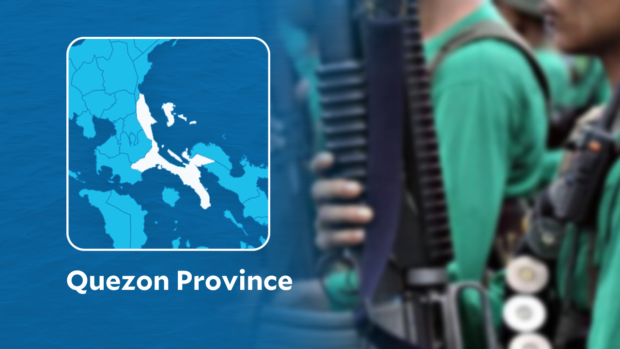
LUCENA CITY, Quezon, Philippines — Once a stronghold of New People’s Army (NPA) rebels in Southern Tagalog, Quezon province was declared free from the influence of communist insurgents in a ceremony held on Monday.
Local government, police, and military officials said the province had attained “Stable Internal Peace and Security” or a SIPS status, which means the Communist Party of the Philippines (CPP), the National Democratic Front of the Philippines (NDFP) and the NPA no longer posed a threat to local peace and order.
A program marking the declaration was held at the Quezon Convention Center here, attended by Police Lt. Gen. Rhoderick Armamento and Army Lt. Gen. Efren Baluyot, the police and military Southern Luzon commanders, respectively; Col. Ledon Monte, the Quezon provincial police chief; local government officials from the province’s 39 towns and two cities; and national government representatives.
Later in an online interview, Monte clarified that the NPA may still have “possible remnants” in Quezon “but they are no longer capable of initiating terrorist acts [and] they have no more supporters.”
Preserving peace
Quezon Gov. Angelina Tan said the next challenge for the local officials would be to preserve the peace and make the residents “feel [this] milestone” through poverty alleviation programs.
Tan noted Quezon was the first province in the Calabarzon region (Cavite, Laguna, Batangas, Rizal, Quezon) to be given SIPS status.
Some provinces, she said, had been bestowed that status “through papers or resolutions… but nothing has happened in the towns under their jurisdiction.”
Sariaya Vice Mayor Alex Tolentino, whose town was declared insurgency-free on June 9, recalled how Sariaya became synonymous with rebel activity in the 1980s.
The town, which lies at the foot of Mount Banahaw, once served as base of the NPA’s Melito Glor Command under Gregorio “Ka Roger” Rosal, the longtime NPA spokesperson before he died of a heart attack in June 2011 at age 64.
Last clashes
The current NPA spokesperson, however, had dismissed the SIPS declarations in a statement issued last month.
According to Ka Cleo del Mundo of the Apolonio Mendoza Command, a unit said to be still operating in Quezon, ending the insurgency would require a peace agreement between the government and CPP-NPA-NDFP.
On Dec. 13 last year, Macalelon town, part of the area known as the Bondoc Peninsula, became the first Quezon municipality to be declared NPA-free.
In January this year, the Army and the local police faced a band of NPA rebels in gun battles in San Andres and San Francisco towns. The encounters left three insurgents dead and one soldier wounded.
In March, government forces again clashed with what they called NPA remnants in Macalelon.
Since then, there have been no reported battles in the province but only “mass surrenders” of NPA rebels, allied militia members and other supporters.
Purge
Aside from the Bondoc Peninsula, the Polillo-Real-Infanta-General Nakar (PRIN area) in northern Quezon is also considered a former hotbed of the insurgency.
In the 1980s, “Operation Missing Link (OPL)”—the NPA’s bloody purge of suspected government spies within its ranks—was largely carried out in Quezon. Mass graves believed to be containing the remains of the purge victims were discovered years later in the mountains of Mauban town.
A memorial for the purge victims has been installed inside the headquarters of the Quezon Provincial Public Safety Company along Maharlika Highway in Candelaria town.
In 2010, the NPA in Quezon started to suffer major setbacks with the death or capture of top leaders and the surrender of guerrilla fighters.
This was during the stint of then Brig. Gen. Eduardo Año as the top Army commander in the province.